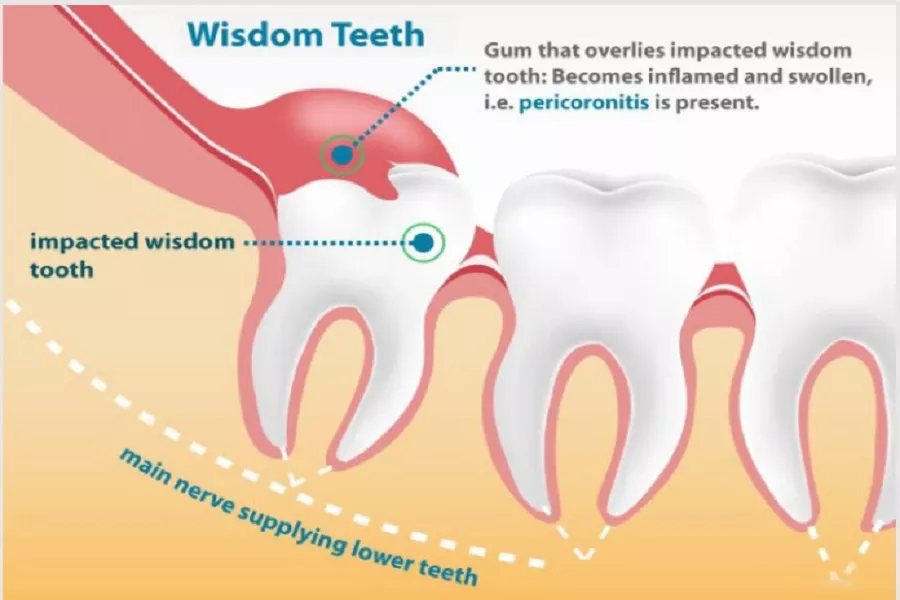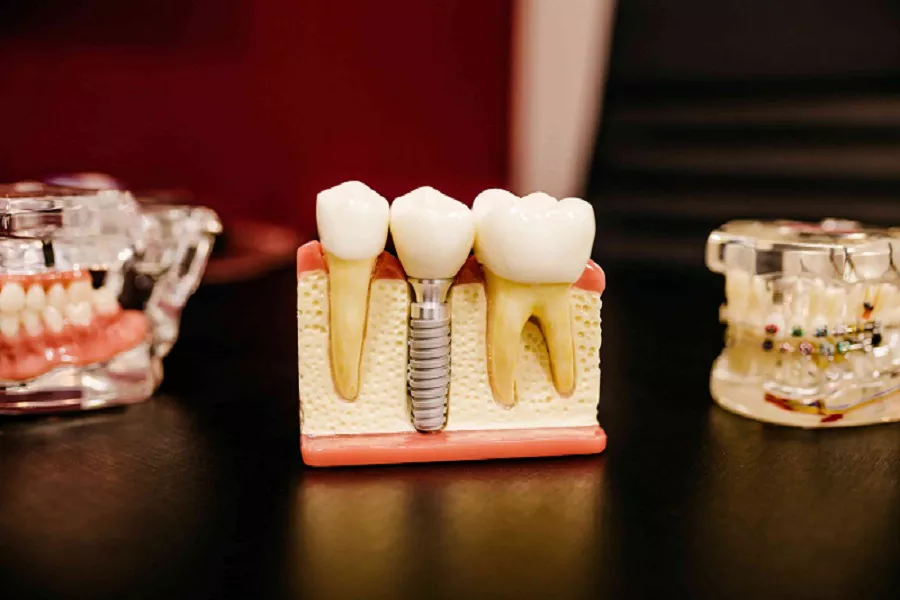In medicine, wisdom teeth are also called third molars. They are the eighth teeth from front to back. Wisdom teeth are the last permanent teeth to grow out of the thirty-two permanent teeth in humans. They are located at the back of the upper, lower, left, and right dental arches. Wisdom teeth are also called wisdom teeth because they are usually around the age of sixteen to twenty-four when they grow.
In the process of human evolution, as the food becomes more and more refined, the burden on the jawbone is correspondingly reduced, resulting in the continuous reduction of the jawbone bone mass, but the volume of the teeth does not decrease accordingly, and finally the position of the teeth to erupt is insufficient, and the last eruption of the first teeth. Trimolars are the most likely to form wisdom tooth pericoronitis, which is the main reason for the abnormal eruption position of wisdom teeth. The origin of wisdom teeth Wisdom teeth refer to the four third molars in the human oral cavity, the innermost, upper, lower, left, and right sides of the alveolar bone. Because these 4 third molars began to erupt at the age of 20. At this time, people’s physical and psychological development was close to maturity, so they were regarded as a symbol of “the arrival of wisdom”, so they were called “wisdom teeth”-wisdom teeth.
In fact, from the point of view of modern medicine, wisdom teeth are inevitable in human evolution. As we all know, “use it and lose it” is a universal law in the theory of biological evolution. Wisdom teeth are an excellent example. Which wisdom teeth should be removed to keep? Whether wisdom teeth are extracted or not is particular, that is to say, the extraction and retention of wisdom teeth should be determined according to the degree of impacted wisdom teeth, their orientation (mesial, distal, buccal, lingual, etc.) and the presence or absence of chewing function. Often complicated by inflammation and other conditions to decide.
According to research studies, it is considered that wisdom teeth with the following comorbidities should be extracted:
1. Buccal impacted wisdom teeth that have no chewing function and often bite through the buccal mucosa may become focal teeth that lead to buccal mucosa rupture, infection, erosion, or even become precancerous lesions, and should be removed early.
2. Low vertical impacted wisdom teeth that are often complicated by acute and chronic pericoronitis have become focal teeth that affect health and should be extracted.
3. Mesial oblique impacted wisdom teeth, although asymptomatic, the existence of the wisdom teeth can cause the cavities of the distal adjacent teeth of the second molars in the neck. In order to protect the second molars with important chewing function, early extraction of such impacted wisdom teeth is recommended. For other wisdom teeth with normal tooth position and chewing function, or wisdom teeth with no chewing function despite impaction, but without complications such as discomfort, inflammation, dental caries, or wisdom teeth that can be used as abutments for denture (denture) restoration Wisdom teeth should be retained. Wisdom tooth extraction is very difficult. Some impacted disease particles are buried horizontally, requiring mucosal incision and deboning before they can be removed. Due to the large damage during the operation, the postoperative reaction may also be severe, which may lead to facial irritation. Postoperative swelling. Therefore, it is necessary to routinely prepare anti-inflammatory drugs and painkillers after surgery.
Reminder: For more knowledge about crooked teeth, tooth deformities, wisdom teeth, etc., please pay attention to: padmel.com, to provide you with comprehensive professional tooth extraction, wisdom teeth extraction, dental implants and other dental maintenance knowledge.































